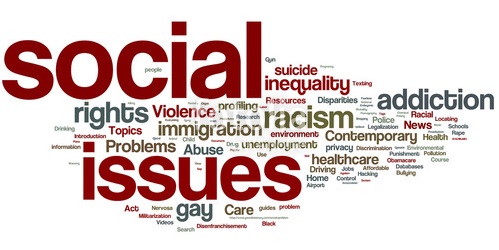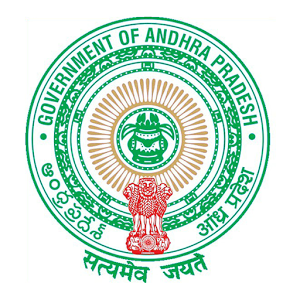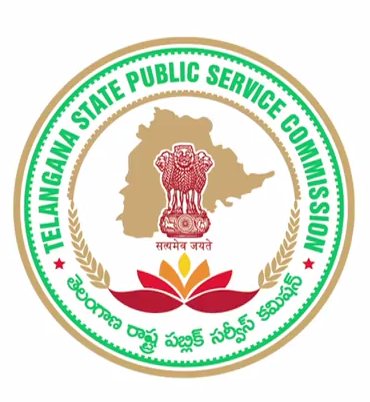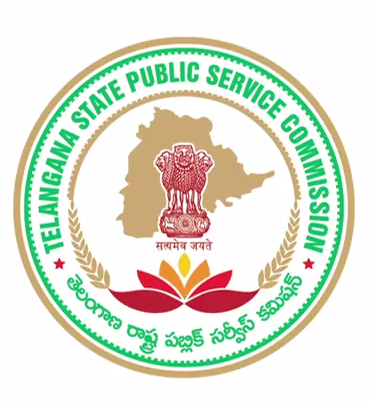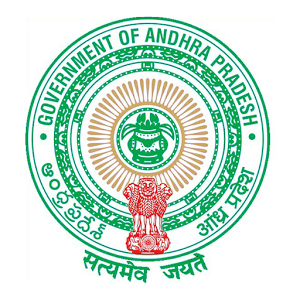
APPSC GROUP 1 MAINS EXAMINATION SYLLABUS 2018
(DESCRIPTIVE TYPE)
GENERAL ENGLISH
(X Class Standard, Qualifying Nature – Marks would not be counted for selection to Interview)

Reading Comprehension
SECTION –I Reading Comprehension Passage- (followed by Questions)
Descriptive Passage
Literary Passage
Functional Grammar:
Recognition of Parts of Speech
Verb forms – Usage of Tenses
Conditional Sentences
SECTION-II
Identifying and Interchange of Sentences
(Simple, Complex, and Compound) (Active and Passive voice)
Use of Prepositions and Prepositional Phrases
Articles
Correction of Sentences
SECTION-III
Vocabulary Usage
Use the given Idioms and Phrases in your own Sentences
One Word Substitutes – Recognition and Usage
Synonyms – Recognition and Usage
Antonyms – Recognition and Usage
Words often confused
Expansion of Proverb /Sayings
SECTION IV
Composition
Write a Paragraph using the given Words/Phrases
Summarizing /Precis Writing
Essay writing on Topics of Social relevance
Description of a given Picture/Symbols
Letter writing (Informal & Formal)
Non-Verbal Communication (Body Language)
PAPER-I GENERAL ESSAY
Candidate should write three Essays one from each section compulsorily. Each section contains three topics. Each Essay carries 50 marks.
SECTION-I –
Crisis management, Social, Economic and Health Problems, Analysis and solutions, Conflict Resolution, Decision Making, Ecological intelligence.
SECTION-II –
Current events, policies, schemes and programmes of National and International importance.
SECTION-III –
Current events, policies, schemes and programmes of the State of Andhra Pradesh
PAPER – II
SECTION – I
HISTORY AND CULTURAL HERITAGE OF INDIA WITH EMPHASIS ON 20TH CENTURY HISTORY OF INDIA
1. Indus Valley Civilization – Vedic Culture – Social Formation –Emergence of New Religious Sects in 6th B.C.E. – Jainism and Buddhism and Its Impact – Rise of Mauryans – Ashoka Dharma –Social and Cultural Life – Sangam Age and Its Literature – Kushanas and their Contribution to Culture – Guptas – Socio-Economic and Cultural Conditions – Harshavardhana and His Contribution to Buddhism.
2. Pallavas of Kanchi, Chalukyas of Badami and Cholas of Tanjore -society, Religion, Language, Literature, Art and Architecture – Delhi Sultanate – Cultural Developments – Significance of Bhakti and Sufi Movements and Its Influence – Emergence of Composite Culture – Vijayanagar Empire – Socio-Economic and Cultural Conditions.
3.Mughals – Socio-Religious Life and Cultural Developments – Rise of Shivaji – Advent of Europeans – Trade Practices – Rise of English East India Company – Its Hegemony – Changes in Administration – Social and Cultural Spheres – Role of Christian Missionaries – Resistance to British Rule – 1857 Revolt and Its Impact
4. Socio-Religious Reform Movements – Raja Ram Mohan Roy, Dayananda Saraswathi, Swamy Vivekananda, Annie Besant, Sir Syed Ahmed Khan and Others Self Respect Movements – Jyotiba Phule, Narayana Guru, Periyar Ramaswamy Naicker, Mahatma Gandhi, Dr. R. Ambedkar and Others.
5. Indian Nationalism – Factors for the Growth of Nationalism – Three Phases of India’s Freedom Struggle – 1885-1905, 1905-1920 and Gandhian Phase 1920-1947 – Tribal, Peasant and Workers Movements – Women and Dalit Movements – Role of different parties and organizations in the freedom struggle including role of revolutionaries – Local and regional movements as part of freedom struggle – Inter religious Unity and Communalism – Freedom and Partition of Ind
SECTION – II
SOCIAL AND CULTURAL HISTORY OF ANDHRA PRADESH
1. Ancient Andhra: Satavahanas, Ikshvakus, Salankayanas and Vishnukundins – Social and Economic Conditions – Religion, Language, Literature, Art & Architecture – Chalukyas of Vengi – Social Life, Religion, Telugu Language, Literature, Learning, Art and Architectu
2. Medieval Andhra: Socio-Cultural and Religious conditions in Andhradesa between
1000 to 1565 A.D – Growth of Telugu Language and Literature (Kavitraya- Ashtadiggajas) – Fine-Arts, Art & Architecture – Monuments – Significance, Contribution of Qutubshahis to Andhra History and Culture.
3. Modern Andhra: European Trade establishments in Andhra – Andhra under Company Rule – Education – Role of Christian Missionaries –Socio-Cultural Awakening – Kandukuri Veeresalingam, Raghupathi Venkataratnam Naidu and Others – Prominence to Spoken Telugu – Gidugu Ramamurthy and others – Library Movement in Andhra Pradesh – Role of News Papers
4. Nationalist Movement in Andhra and Role of Andhra Leaders – Non- Brahmin Movement and Justice Party – Nationalist and Revolutionary Literature – Role of poets/authors/social reformers (like Gurajada Appa Rao, Kandukuri Veereslingam, Rayaprolu Subba Rao, Unnava Lakshminarayana, Gurram Jashuva, Boyi Bheemanna, Sri Sri, Garimella Satyanarayana, Tripuraneni Ramaswamy Choudhary and Several Others) – Andhra Mahasabha – Movement for Separate Andhra State –
1903 to Formation of Andhra State 1953 – States Reorganisation Commission and Its Recommendations – Emergence of Andhra Pradesh 1956 – Important Social and Cultural Events between 1956 and 2014.
5. Bifurcation of Andhra Pradesh and its Administrative, Economic, Social, Cultural, Political, and legal implications/problems, including
- a) Loss of capital city, challenges in building new capital and it’s financial implication
- b) Division and rebuilding of common Institution
- c) Division of employees, their relocation and nativity issue
- d) Effect of bifurcation on commerce and entrepreneu
- e) Implications to financial resources of state government.
- f) Task of post-bifurcation infrastructure development and opportunities for investments.
- g) socioeconomic, cultural and demographic impact of bifurcation.
- h) Impact of bifurcation on river water sharing and consequential issue
- i) AP REORGANISATION ACT, 2014 and the arbitrariness of certain provision
SECTION-III
AN OVERVIEW OF THE INDIAN CONSTITUTION
1) The Indian Constitution- Making of the Constitution- Legacies of British Rule- Constituent Assembly- Constitutional Development – Salient features of the Indian Constitution- Preamble- Fundamental Rights- Directive Principles of State Policy and their relationship- Fundamental Duties- Impact of Socio- Economic factors on Indian Polity
2) Structure and functions of Union Government- Legislative, Executive, Judiciary and their relationship- State Governments- Legislative, Executive and Judiciary and their relationship- Types of Legislatures- Unicameral, Bicameral, Executive– Parliamentary, Judiciary- Judicial Review and Judicial Activism.
3) Centre- State relations between Indian Union and States- Administrative, Legislative and Financial- Need for Reforms- Recommendations of Rajmannar, Sarkaria and M.M. Punchchi – Is Indian System, a Federal or Unitary System – Powers and Functions of Constitutional Bodies- UPSC, State Public Service Commissions, CAG.
4) Amendment Process to the Constitution – Centralization Vs Decentralization – Constitutional Review Commission, Community Development Programs- Grass root Democracies- Local Governments- Rural and Urban- 73rd and 74th Constitutional Amendment Acts and their Implementation.
5) Party Systems- National, Regional- Types of Party Systems- One Party, Bi-Party, Multi-Party- Regionalism and Sub- Regionalism – Demand for New States – Sri Krishna Committee – Threats to National Integration- Elections- Election Process- Role of Election Commission- Need for Reforms- Voting Behaviour.
6) Social Movements and Welfare Mechanisms- Agrarian, Civil Liberties, Women, Tribals, Dalits and Environmental- Need for Reforms for SCs, STs and BCs- Prevention of SC’s and ST’s Atrocities Act- National and States SC’s ST’s and BC’s Commissions- Women Commission- Minorities Commissions- Human Rights Commission- RTI- Lokpal and Lok Ayukt.
PAPER – III
SECTION – I PLANNING IN INDIA & INDIAN ECONOMY
1) National income and other macroeconomic aggregates in India – Trends; Sectoral Contribution of Income; Human Development – Indicators – Importance and Measurement.
2) Indian Economic Planning – Characteristics – Types – Objectives – Achievements and Failures – Vision, strategy, accomplishments and difficulties in implementation of various 5 year plans (starting from 1st plan to 12th plan) – Economic reforms and liberalization – Origin of Economic Crisis (Meltdown in 2007- 08) market failure – Role of Public and Private Sectors – Guiding principles and functioning of Niti Ayog – Decentralization in resource sharing – Cooperative Federalism – Finance Commissions
3) Poverty and Unemployment in India-Concepts-Magnitude-Measurement – Causes; Measures for Eradication of Poverty; Unemployment – Nature – Types – Causes – Government Policy initiatives for mitigating Unemployment – MGNREGS; Income inequalities – causes- measurement- Remedial Measures.
4) Monetary Policy – Objectives – Functions of Reserve Bank of India (RBI) – Control of Credit – Structure of Indian Banking – Financial Sector Reforms. Trends in Revenue and Expenditures of the Central and State Governments – India’s Public Debt –Analysis of the Union Budget – Demonetization as a policy instrument
5) India’s Economic Problems: Nutrition and balanced diet – provision of Health care and basic education to all financing of infrastructure – PPP; agrarian crisis – migration
– urbanization – growth of slums; climatic change; irrigation and water; skill development and demographic dividend; environmental degradation
SECTION – II
LAND REFORMS & SOCIAL CHANGES IN ANDHRA PRADESH AFTER INDEPENDANCE
1) Genesis of Land Reforms – Abolition of Intermediaries – Tenancy Reforms – Land ceiling in Andhra Pradesh.
2) Structure of the Andhra Pradesh Economy – Sectoral and Regional Analysis – The Extent of Poverty – Agricultural Inputs and Technology.
3) Demographic Features and Social Backwardness – Literacy and Occupational Structure – Changes in the Sectoral Distribution of Income and Employment- Socio- Political and Economic Empowerment of Women.
4) State Finances and Budgetary Policies – Trends in Revenue and Expenditures of State Government – Public Debt – Analysis of the State Budget.
5) Five Year Plans of Andhra Pradesh – Outlays; Regional Imbalances – Development Strategies in Andhra Pradesh – Outlays after formation of Niti Ayog
SECTION – III
ANDHRA PRADESH ECONOMY, PRESENT STATUS ITS STRENGTHS AND WEAKNESSES
1) Growth and structure of industries in Andhra Pradesh, factories, small and tiny sectors, their composition and growth – problems – remedial measures.
2) Agricultural growth in Andhra Pradesh – Trends in agricultural output and productivity – Agricultural Price Policy – Public Distribution in Andhra Pradesh.
3) Regional disparities in income, industrial output, irrigation, health and education in Andhra Pradesh.
4) Agricultural credit in Andhra Pradesh – Sources of Rural Credit – Institutional and non –institutional-Co-operative Credit societies – Micro Finance and Development – Adequacy of credit. Service sector in Andhra Pradesh – with special reference to Power, Transport & Communication, Tourism & IT Sectors.
5) Growth Corridors – Exploration of minerals – Infrastructural projects in A.P – Ports Development – World class Educational Institutions.
6) Mission oriented Development Strategy – Key Missions – Vision 2020 and 2050 – Sunrise Andhra Pradesh – CORE – Post reorganization economic and welfare programmes and schemes of Government of Andhra Pradesh
PAPER – IV
SECTION-I
ROLE AND IMPACT OF SCIENCE AND TECHNOLOGY IN THE DEVELOPMENT OF INDIA:
UNIT 1: Science and Technology- Classical and emerging areas their relevance to the day to day life, National Policy of Science and technology and its changes, Importance of science and technology nation Building.
UNIT 2: Nation Policies of Science and Technology- energies in Policies with time, Technology Missions- Basics in Computers in Communication and Broad-costing, Role of the information Technology in rural India, Software Development in Economic Growth, Development of Nanotechnology, Role of Nanotechnology in different areas.
UNIT 3: Space Programme in India, its Applications with Reference to industrial, Agricultural and other rural development activities; INSAR, IRS, EDUSAT, Chandrayan, Mangalayan and other futures Programmes, a role of Space Programme in Agriculture and Rural Development, IRNSS.
UNIT 4: Energy Resources: Energy demands, Indian Energy Sciences Conventional energy powers, Tharmal, renewable energy resources, Solar, wind, Bio and wasted based, energy policies Geotharmal and Tidel Sources, energy Policies in India, energy security.
UNIT 5: Current Science & Technology Developments in India, Global Warming and Climate change, Floods, Cyclones and Tsunami, Natural and Manmade Disasters, Tsunami, Mobilization and Industrialization.
SECTION-II
BIOLOGICAL RESOURCES, HUMAN WELFARE AND MODERN TRENDS IN LIFE SCIENCES
UNIT 1: Biological Resources: Plants, animals and Microbes. Outline classification of plants, animals and microorganisms. Microbial resources – History of fermentation development industrially important fermentation products – antibiotics, organic acids, alcohols, vitamins, amino acids. Insulin, and growth hormones.
UNIT 2: Plants and Animal Resources: Uses of plants-food, fodder, medicine and fibres and other products. Cultivated plants-origin and Indian natives. Poisonous plants. Animals-wild and domesticated. Usefulness of animals for mankind for food and medical advancements.
UNIT 3: Human diseases-microbial infections. Common infections and preventive measures. Introduction to bacterial, viral, protozoal and fungal infections. Basic knowledge of infections-diarrhoea, dysentry, cholera, tuberculosis, malaria, viral infections like HIV, Encephalitis, Chikungunya, bird flu-preventive measures during out breaks.
UNIT 4: Introduction to Genetic Engineering and Biotechnology. Basic concepts of genetic engineering. Tissue culture methods and applications. Biotechnology in agriculture- Bio-pesticides, Bio-fertilizers, Bio-fuels, Genetically modified crops. Animal husbandry- transgenic animals.
UNIT 5: Vaccines: Introduction to immunity, Fundamental concepts in vaccination, Production of Modern Vaccines (production of Hepatitis vaccine).
SECTION III
ECOLOGY, NATURAL RESOURCES AND ENVIRONMENTAL ISSUES
UNIT -1: Ecosystems and Biodiversity: Ecosystem- structure and function. Energy flow in ecosystems, productivity and food chains. Biogeochemical cycles- C & N. Types of Ecosystems – aquatic and terrestrial, Biodiversity: types – genetic, species and ecosystem diversity and value – economic values (food, fiber, medicine). hot spots. Threats and. Biodiversity conservation- in situ and ex situ.
UNIT -2: Natural Resources: Types of Natural resources- renewable and Non- renewable. Forest resources. Fishing resources. Fossil Fuels- Coal, Petroleum and Natural Gas. Mineral resources. Water resources – Types, Water shed management. Land resources – types of soils and soil reclamation. Nonconventional energy resources.
UNIT -3: Environmental pollution and Solid waste management: Sources, impacts and control of – air pollution, water pollution and soil pollution. Noise pollution. Solid waste management – Types of solid waste, impacts of solid waste, recycling and reuse.
UNIT -4: Global Environmental issues and role of information Technology in Environment and Human Health Ozone layer depletion, Acid rain. Climate change and its impacts.
UNIT -5: Environmental legislation: International Law, Montreal protocol, Kyoto protocol, United Nations Framework Convention on Climate change, CITES. The Environment (Protection) act 1986, Forest conservation Act, Wildlife protection act. Biodiversity Bill of India – cop 21 – Sustainable Development Goals – National Disaster Management Policy, 2016 of India and Disaster management initiatives in India.
PAPER-V
DATA APPRECIATION AND INTERPRETATION, LOGICAL REASONING, QUANTITATIVE APTITUDE AND PROBLEM SOLVING.
1. Data Analysis and Interpretation of diagrammatic data – Analytical Interpretation of statistical Data, Study of Graphs and Charts – Bar graphs, Line graphs and Pie- charts and drawing conclusion Basic problems in Trigonometry like properties of triangle, heights & distances. Basic problems in Probability and Statistics including construction of frequency tables, mean, median, mode, range, coefficient of variation, variance, standard deviation etc.
2. Logical Reasoning and Quantitative Aptitude
a) Time and Work, Speed -Time – Distance, Simple and Compound Interest, Logical reasoning problems like Calendar and Clock Problems, Blood Relationship, Seating arrangement etc
b) Quantitative Aptitude – Number system, Number Sequences, Permutations and Combinations, Series, Averages, Ratio and Proportion, Profit, loss and discount problems etc.,
c) Coding and Decoding problems: coding using Ciphers and non-ciphers
d) Problem solving using Venn Diagrams
3. Passage Analysis: A duly structured situation which is related to issues in social or economic development will be presented to the candidates and they will be asked to analyze and suggest their own solution to the problem arising out of situation. Alternatively, they may be called upon to prove the understanding of the situation by answering certain searching questions based on the situation.






